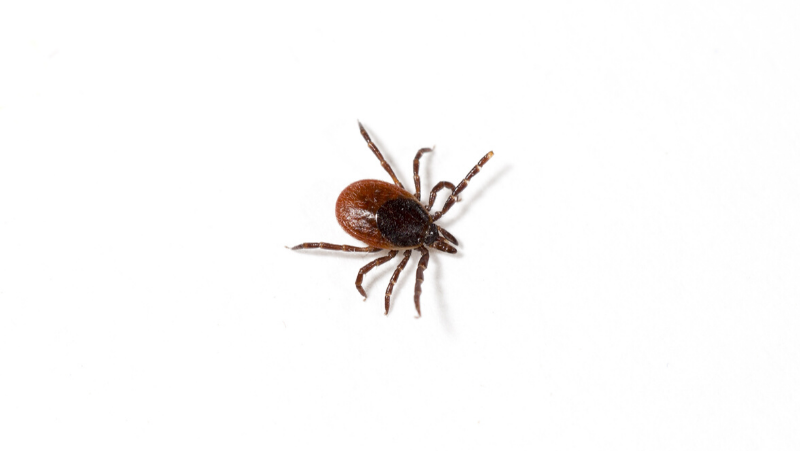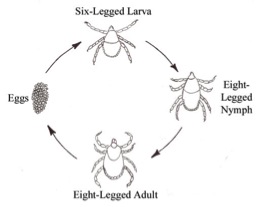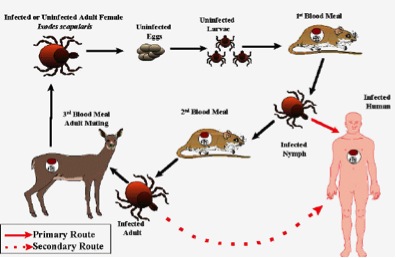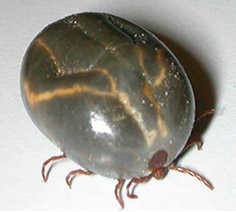tick life cycle nz
A new species of Encyrtid wasp Ixodiphagus sp has been found parasitising two New Zealand tick species Ixodes euyptidis and Ix. Most ixodid ticks require three hosts and their lifecycles typically span three years.
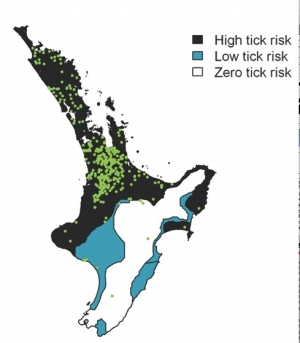
Hardy Ticks Well Equipped To Survive Thrive
These stages are egg larvae or seed tick nymph and adult.

. Egg larva nymph adult. The life cycle of a tick is completed after four stages namely egg larva nymph and adult it requires more than a year to complete a full life cycle. A tick egg hatches into larva in the winter.
In veterinary terms the disease is called oriental theilerisosis. The life cycle of a tick can be divided into four sections. These hatch into larvae which crawl onto the animal and feed then they drop off to moult into nymphs which in turn feed drop off and moult into adults to start the cycle.
Ticks are a clear illustration of how food works as an energy source. This nymph can over-winter in quite cold temperatures. These are spherical slightly translucent dark brown in color and are laid in clusters of up to 3000 individuals.
There are many different species of tick in the world but Hlongicornis is the only one found in New Zealand. Ticks begin their lives as eggs. Uriae in Otago Health ACG.
Aponomma sphenodonti Tuatara tick Haemaphysalis longicornis Cattle tick and Ixodes anatis Kiwi tick. The majority of New Zealand ticks are sea bird ticks. New Zealand appears to be lucky in having only one major stock tick.
This is the safest way to handle your outdoor clothing as ticks can survive a full cycle in the washing machine. Ticks go through four life stages. The main diseases of concern in some other countries are not currently present in New Zealand.
They drop off moult to become adults. Inside or out ticks love a warm environment to lay their eggs. Now let us look at their life cycle to get a better understanding.
Ticks that complete their life cycle in this manner are called two-host ticks like Hyalomma anatolicum excavatum. Ticks are a clear illustration of how food works as an energy source. Egg six-legged larva eight-legged nymph and adult.
Once the egg hatches a tick needs a blood meal at each stage in order to survive and continue to grow. 1 The Egg Stage 1 After the adult female tick has acquired a proper blood meal she mates with the adult male tick leaves the host and searches for a suitable spot to lay her eggs. Ticks need energy from blood in order to grow develop and lay eggs.
Aside from its missing set of legs the larva looks a lot like an adult tick. Ticks have the potential to pose public health and biosecurity risks because they can carry and transmit human and animal diseases. A tick egg is laid in the spring.
Generally adult female hard ticks breed while on the host animal and then drop to the ground to lay eggs. The ticks will dry out and die within 24 hours. However the Ministry is not aware of any cases of people catching a disease from a tick bite in New Zealand.
A nymph becomes an adult tick in the fall and winter before laying its own eggs in the spring. This protozoan Theileria orientalis ikeda is the one currently causing problems and spreading south in New Zealand cattle. Ticks have backwardly pointing teeth Handle your clothing carefully When you come in place your clothing somewhere warm to dry out in a hot room or on a hot windowsill.
When the egg hatches a six-legged larva emerges. The majority of hard ticks require three different hosts to complete their development. Ticks are not able to lay eggs directly on a host they must first detach.
Without blood ticks cant do any of this. In early spring ticks begin to lay their eggs. The First Stage egg The adult female tick first fulfills a proper blood meal then the process of mating occurs between an adult male and adult female tick.
Hard ticks have only one nymphal stage unlike soft ticks. On average tick eggs hatch after about 2 weeks though it can take as long as 6. When the egg hatches a six-legged larva emerges.
The female tick then leaves the host and. The eggs hatch and six-legged larvae emerge from the eggs. Ixodes scapularis the black-legged deer tick which is the primary vector for Lyme disease has a four-stage life cycle and a lifespan of about two years.
Ticks typically have three life stages adults which feed on an animal then drop off to lay eggs. The early mid-summer than attach to a host again and engorge to about 10mm over three to five days. A tick begins its life as an egg.
Stages in the Life Cycle of Ticks. In general the life cycle of a hard tick is as follows. Larvae nymph adult and egg.
Depending on the species ticks can live for up to three years during which they go through four distinct life stages. The female tick drops off its host often in the fall and lays thousands of eggs. Aside from its missing set of legs the larva looks a lot like an adult tick.
Ticks generally thrive in warmer moist environments but struggle to survive if. Ticks that require this many hosts can take up to 3 years to complete their full life cycle and most will die because they dont find a host for their next feeding. However they can lay eggs just about anywhere else and they do.
The Life Cycle of A Tick. Since there are so many different tick species the duration of this life cycle varies greatly from a. After hatching from the eggs ticks must eat blood at every stage to survive.
The larvae hatch in the winter and emerge. A newly hatched six-legged larva feeds on a host drops off to the ground and moults to a nymph. Most ticks go through four life stages.
Ticks can live without a blood meal for over a year so leaving pasture un-grazed and hoping the ticks will die from lack of food isnt a very practical option. A tick begins its life as an egg. A nymph seeks out and feeds on a second host drops off to the ground and moults to an adult.
In spring the nymphs now 2-3mm attach to another host and engorge again over three to five days expanding to about 5mm. They need the dry to. Its important to be familiar with this life cycle to get rid of ticks from your lawn and landscape and prevent tick bites.
If you have poorly-drained pasture your animals are more at risk from picking up ticks as this is a good habitat for them. Lets review the life-cycle of a tick. It may be best to fence off those areas.
After hatching from the eggs ticks must eat blood at each stage in order to move on to the next one. Eggs are not dangerous and. Tick season has various peaks corresponding to the life-cycle but generally numbers are higher during the warmer months and they tend to over-winter in New Zealand when they are less active.
It is called a three-host tick with each of its growing stages - larvae nymph and adult - feeding off separate hosts not necessarily of the same species. After a two-year life cycle a female tick can lay thousands of eggs. Life Cycle of Ticks.
Egg larva nymph and adult. Without blood ticks cant do any of this. During this development ticks go through four stages of life.
A larva becomes a nymph in the spring and summer. The life cycle of ticks Eggs. Ticks need energy from blood in order to grow develop and lay eggs.
Theileria is a protozoan which acts as a parasite spread by the saliva of ticks as they suck the hosts blood. These eggs are the first of the four distinct life stages that make up the tick life cycle.
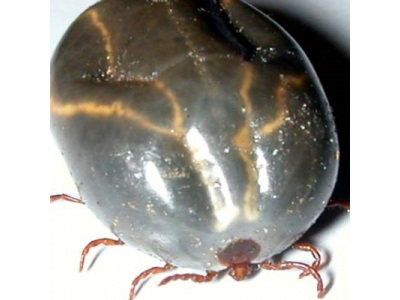
Farm Animal Care Cattle Theileria
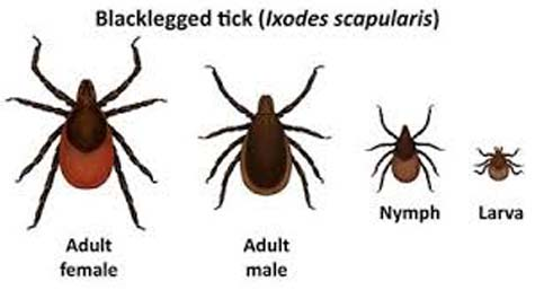
Ticks Ticks Ticks Colebrook Land Conservancy

Ticks And Travel A Deadly Peril Horsetalk Co Nz

Ticks And Travel A Deadly Peril Horsetalk Co Nz
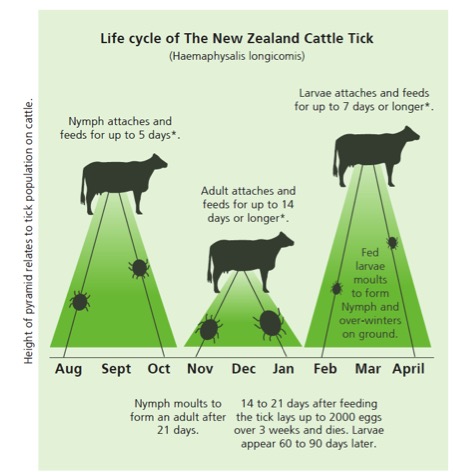
Theileria Emerging Disease In Cattle Vet Centre

1 Typical Three Host Life Cycle Of A Female Ixodid Hard Tick Download Scientific Diagram

Ticks Found On Canterbury Dogs Stuff Co Nz
